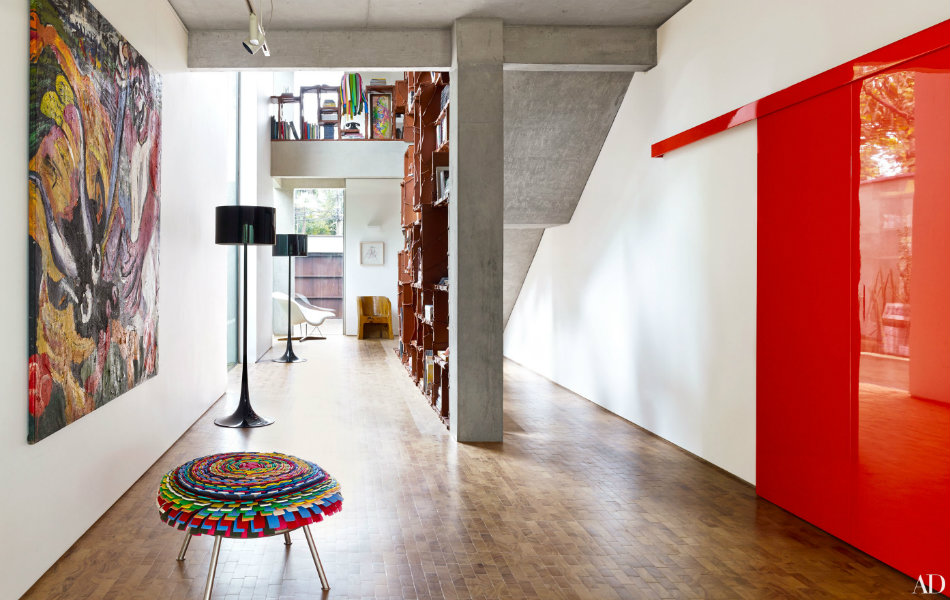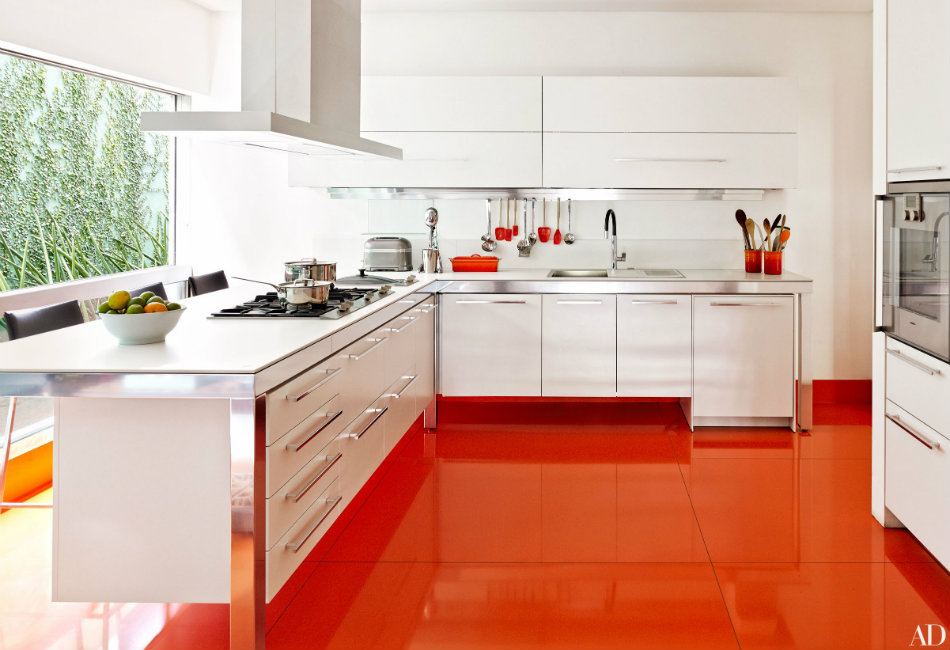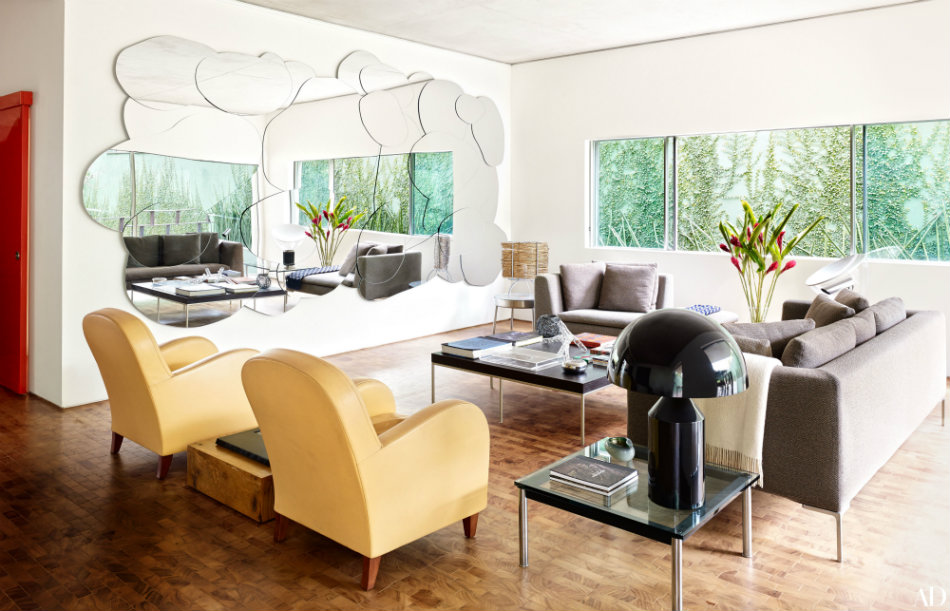Wildly inventive, the Campana brothers, Humberto and Fernando, are the celebrated São Paulo design team who made the famous Banquete chair (2002), composed of stuffed toys, and then created its acclaimed opposite, the Favela armchair (2003), constructed of scraps of wood like the homemade shacks in Brazil’s slums. Even as the siblings have gone on to put their stamp on hotels, showrooms, and the Municipal Theater of São Paulo’s restaurant, they have continued to incorporate odd combinations of materials—fish skin, crystal, rope, bronze—into their sofas, tables, and lamps. Now the men, founders of Estudio Campana, have designed their first house from the ground up—and it’s fittingly adventuresome.
The house, Ricoy recalls, went through several iterations before construction started. (The skeletal bookcase alone was redesigned seven times.) “There was the favela style, then Brazilian Baroque, and then we came back to a simple, very South American tropical look, which is the Campanas’ style, together with some Italian design,” she says. “They made a fusion that reflects us: My husband is Italian, and I am Argentine.”
As for the layout, the basement level (which opens to a dry moat planted with cacti) is given over to staff quarters and the garage. The living room, library, kitchen, and main terrace are on the ground floor, while the second floor has bedrooms for the children and a deep balcony that stretches across the rear façade of gray-painted concrete. The master suite sits on the roof, wrapped by a terrace in the manner of a penthouse.
And that unusual component on the front of the dwelling? Insulating and water-repellent, piaçava often appears in sturdy brooms and as roofing on beach kiosks in Brazil. Though this was the first time the Campanas used the material on a building, they have employed it before. In 2003 they designed a chandelier combining piaçava and Swarovski crystals, and in 2007 they covered a wall with it for the “MyHome” exhibition at Germany’s Vitra Design Museum. For the Zunino-Ricoy house, the straw, attached to wood slats that are hung on an aluminum framework, will need to be replaced every few years or so.

























